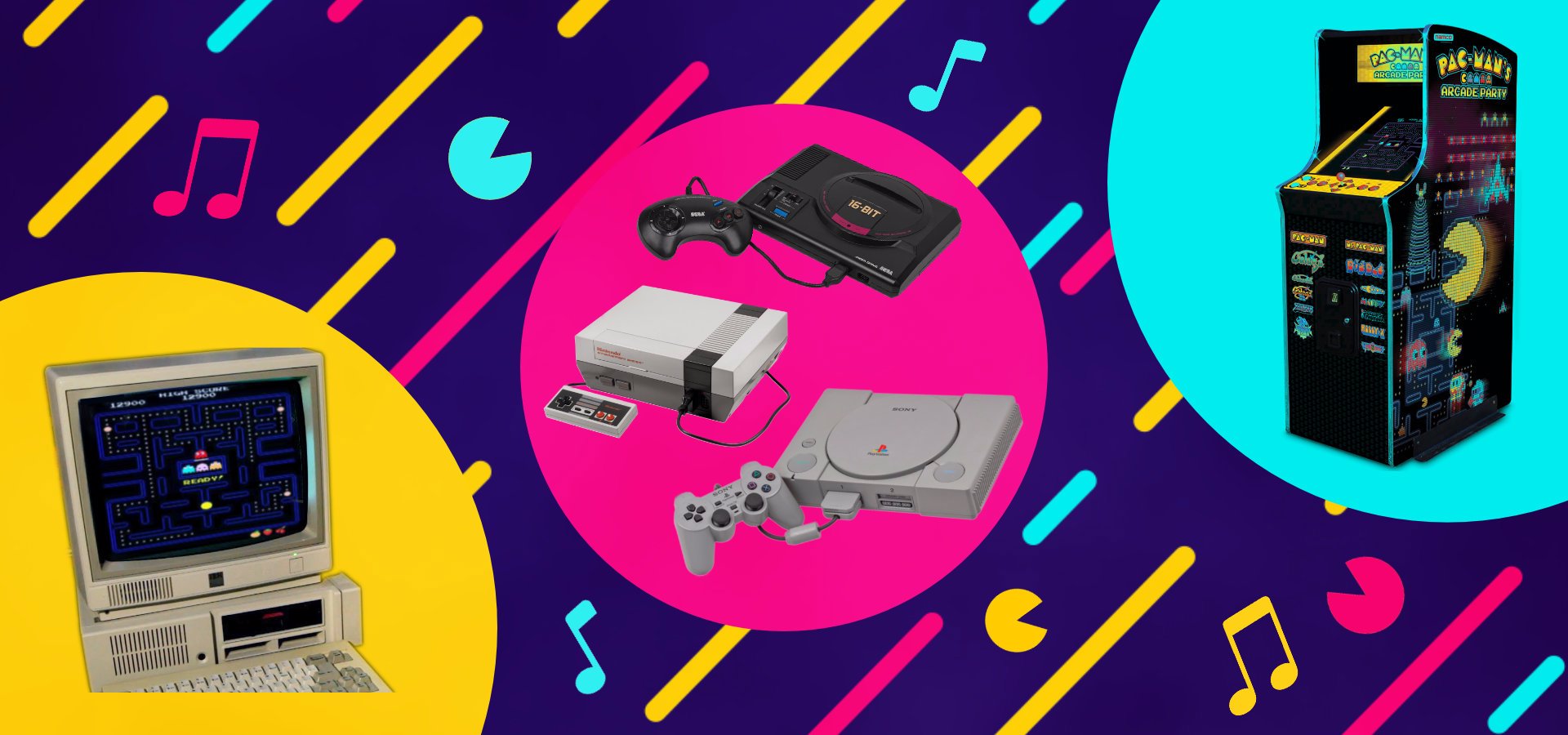Introduction
What does a video game feel like without music? It just doesn't feel right, like there's something missing. And why does it feel that way? I don't think it's possible to narrow down the answer to just one specific reason. We grew accustomed to hear it in video games, that can be part of the answer, but why was it introduced in games in the first place?
The first uses of music
Developers realized quite early the impact music could bring to their games. The 1978 “Space Invaders” was one of the first games to incorporate music and to use it to great effect. It was the first to feature a continuous background soundtrack consisting of four descending chromatic bass notes repeating in a loop. The music was programmed to increase its tempo as the enemies descended on to the player, the added musical pace would make players tense thus making them more immersed in the experience.
Despite the limitations and the electronic nature of the sounds, compositions at the time were still able to elicit a range of emotional responses
As the hardware improved, so did the possibilities for the accompanying music, but for some time composers needed to be clever and use the few sounds the chips would provide them to craft some ingenious compositions. Despite the limitations and the electronic nature of the sounds, compositions at the time were still able to elicit a range of emotional responses, songs were catchy and memorable, and many became iconic and are still present in the heads of many players today. Some examples of iconic retro video game music include the theme of “Tetris” (Type A), “The Legend of Zelda” (The Legend of Zelda Theme) or “Super Mario Bros” ("Super Mario Bros. Theme").
Technology advances
Just like in film it became possible to use real world musical instrumentation and this accompanied by 3D rendering made possible games with a truly “cinematic” experience.
When the 16-bit and 32-bit eras were introduced and with them the expanded storage that CD-ROM provided, was the time when video game soundtracks started to resemble “real” CD quality music. Possibilities were expanded and composers started to be able to create truly evocative works of art. Just like in film it became possible to use real world musical instrumentation and this accompanied by 3D rendering made possible games with a truly “cinematic” experience.
Revered by many as one of the best soundtracks of all time and one of my personal favorites is the soundtrack of Silent Hill 2.
Silent Hill is a survival horror game franshise known for its unnerving atmosphere, character's arc, and clever puzzles. Released in 2001, Silent Hill 2 is considered by many as the best title of the series with the best soundtrack. In Silent Hill characters display a wide range of emotions: love; regret; fear; sorrow; it's all there, and the soundtrack complements and enhances the story and the character's arcs perfectly. With influences from classic and alternative rock, ambient, industrial, and trip-hop, not only is the soundtrack diverse but also full of depth.
In Silent Hill 2 you'll hear emotional and “musical” tracks such as “Theme of Laura” or “Promise (Reprise)” being played during cutscenes which are important for the lore, and a collection of sad, depressing and disturbing themes during gameplay. These music tracks weren't just created and selected at random, they were made specifically to evoke the player's emotions, wether telling its story or inducing a sense of fear and dread onto the player, it's easy to realize that the soundtrack contributes heavily to the overall experience. Composer Akira Yamaoka and its perfectly tailored soundtrack helped make Silent Hill 2 one of the deeper video game experiences to this day.
Music games
There are many possibilities available to developers to use music as the primary vehicle to drive gameplay.
Developers realized they could also build games revolving entirely around music. Rhythm-matching games are such an example, where the player is required to react and perform actions in time with the music as it is played and shown visually, generally to the rhythm of the song being played. Players are generally scored not only by hitting the right button but also by how precisely they hit it in time. To become better at those types of games, players are often required to memorize the actions they perform correctly while playing, in order to be able to anticipate difficult sections or areas where high scoring is possible. Popular titles that include such mechanics include Konami's “Dance Dance Revolution”, “Guitar Hero”, and “Karaoke Revolution”, the latter scores players based on how well they match the pitch of the vocal track.
There are many possibilities available to developers to use music as the primary vehicle to drive gameplay. Besides rhythm-matching, other ideas can be found in existing games, such as using music and the player's timing to improve scoring but in a complementary way to the game's main mechanic, music making games where players are given the ability to create their own music from a variety of sounds (instruments or voices), games where clues to solve puzzles are “hidden” in the music, and many more.
As time passed not only did the sound hardware capabilities improve but also the way we can make music “adapt” to the gameplay.
Today's game music
Fortunately nowadays composers don't need to deal with the limitations of the past, and they can craft whatever works best for the game being developed. They can emulate the sound of the soundtracks of the past, like in the 8 bit era, create powerful emotional orchestral works and anything in between.
As time passed not only did the sound hardware capabilities improve but also the way we can make music “adapt” to the gameplay. Powerful game engines are now available for developers without the need to reinvent the wheel by implementing low level systems, these game engines are already packed with audio features to allow developers to implement music quicker and easier. Other tools known as “audio middleware” were also created to facilitate the implementation of complex music behaviors and sound effects.
Conclusion
In summary and to answer the question made at the beginning of the article as to why was music introduced in video-games and why it is important, is that: video games are better with sounds and music. They are fundamentally an audiovisual medium, and, as the word implies, sound and music play a role as important as the visuals. It would be hard for us to imagine if games of today had no sound or only sound effects just like the arcade games of the late 70s.
Music can serve many purposes within a video game. As explored, a perfectly tailored soundtrack can create and resolve tension on key moments, it can help tell the story by evoking the player emotions, and it can help enhance the aesthetics of the game world, making it more “believable”, even if it's a type of game far removed from reality. Music can also be the whole purpose of a game and besides all of this, music can also help the game become more memorable helping it stand the test of time.





